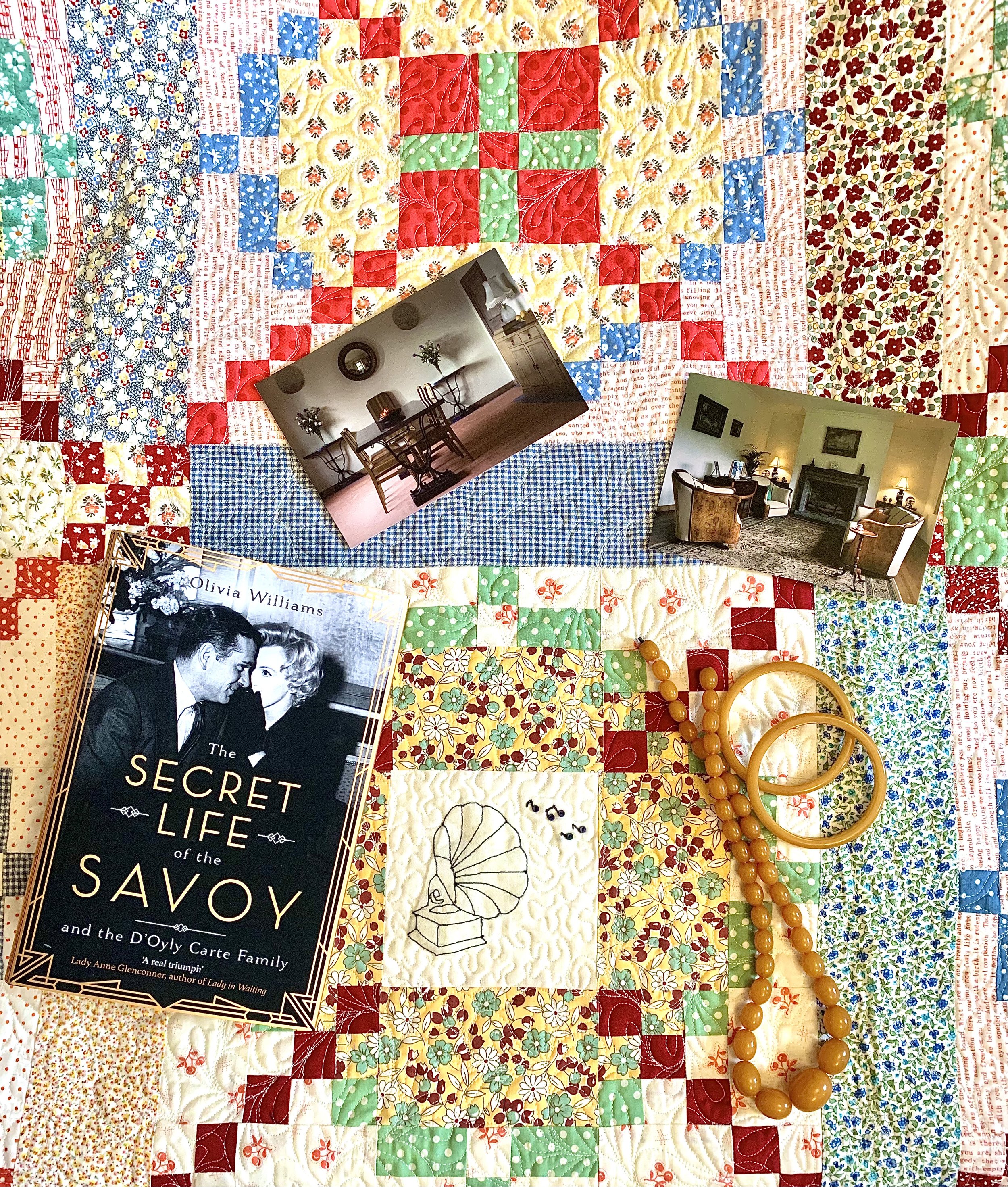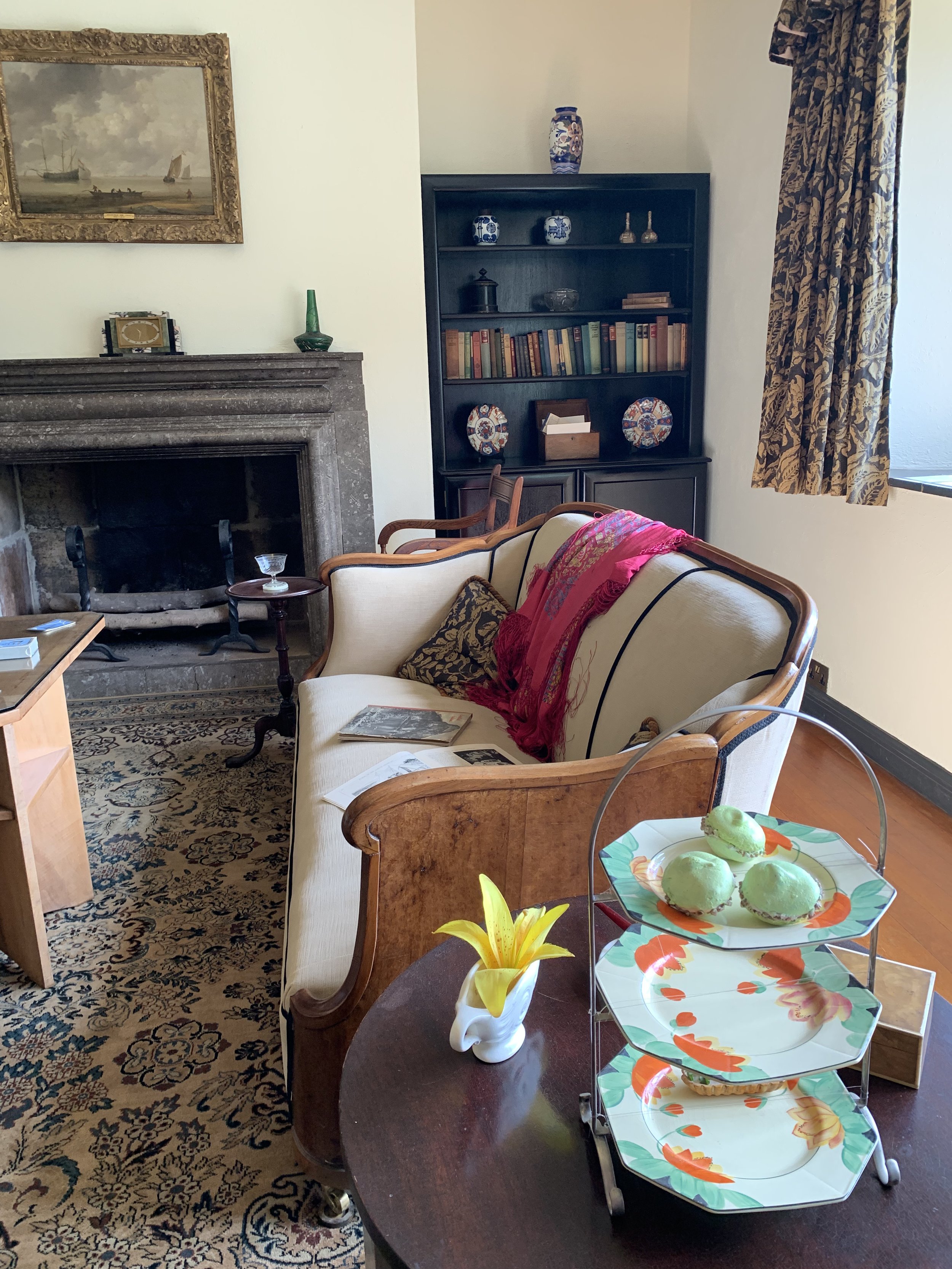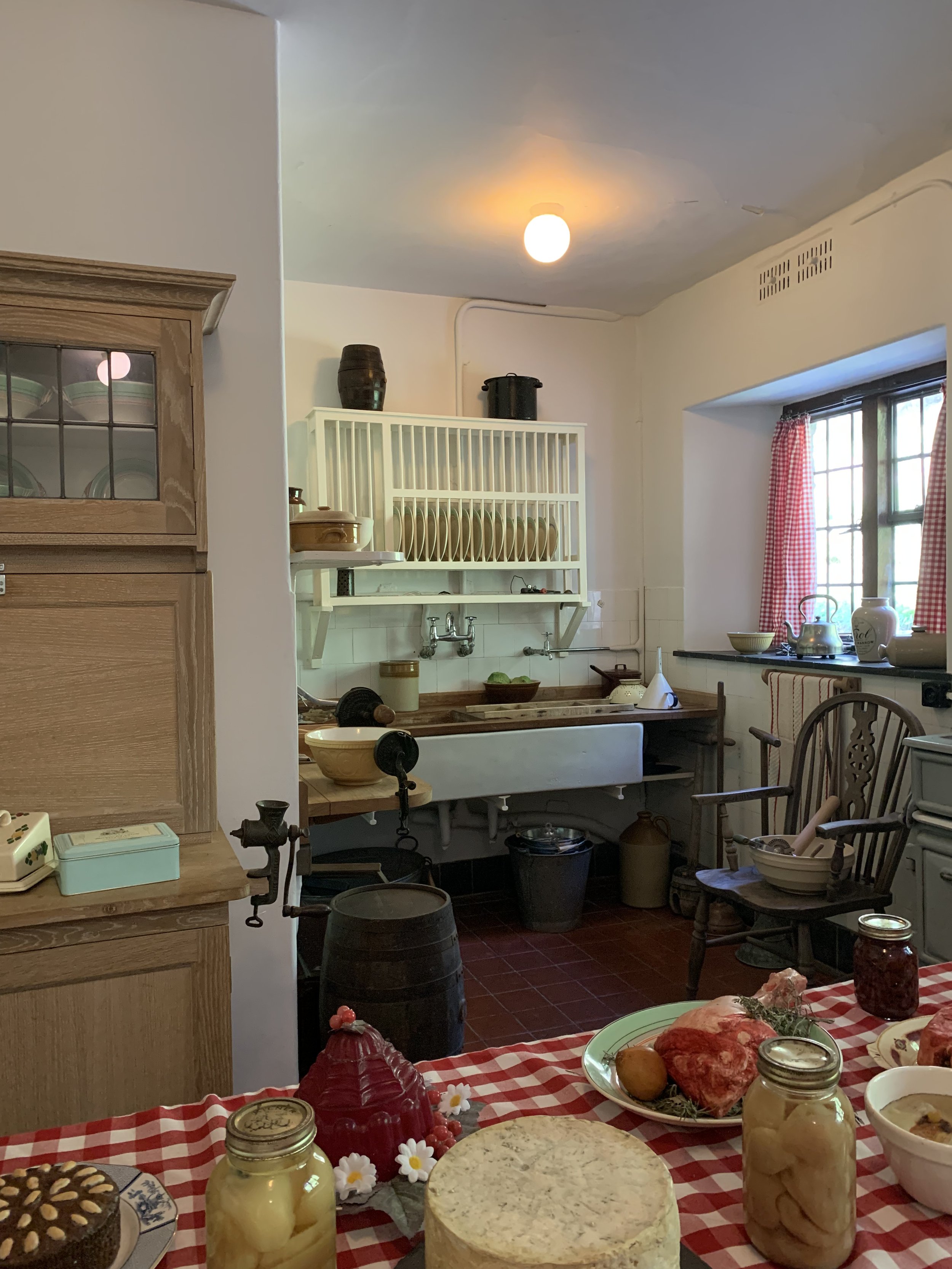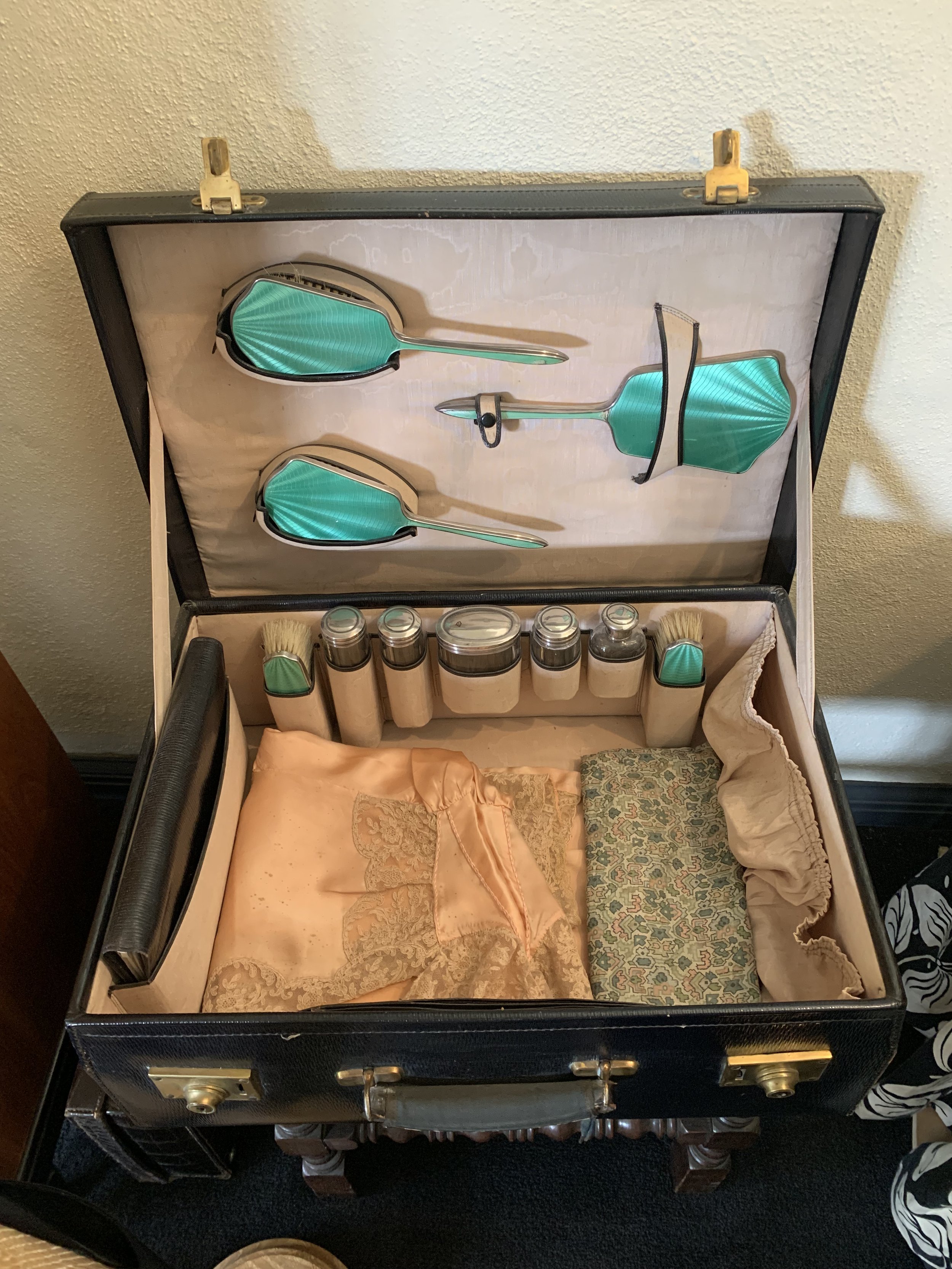Postcard from Devon
/We haven’t ventured abroad this summer, instead we enjoyed a little road trip around Devon and Cornwall and it turned out to be both a literary pilgrimage of sorts and an unexpected wander into the opulent world of the 1930’s and an art deco extravaganza of a house.
What, might you well ask, does ‘The Secret life of the Savoy’ have to do with Devon…well….it’s the most amazing house called ‘Coleton Fishacre’ and it was owned by the family who in turn owned the Savoy Hotel in London and the story has been occupying me for several weeks since we visited early last month. Having finished the book, I now feel that I can write the journal posting in a better way than I might have done from the initial visit. It is a story worthy of a movie and the house..well….it was just so beautiful and the sort of place that Ruby could just move into! LOL!!!
The thing about having a National Trust membership is that you visit places that might otherwise slip through the net and oh how sorry I would have been to have missed this one. It is quite simply one of the best houses I have ever visited, probably because of it’s 1930’s vibe, but it also is part of a much bigger story that is filled with great ambition, great wealth, great success and ultimately great sadness.
Situated on the south coast of England, in Devon close to Dartmouth, it is strategically placed to have it’s own private cove and beach with sweeping gardens, rich in exotic foliage and affording total privacy from the outside world. It was the weekend home of the D’Oyly Carte family, the hugely wealthy owners of not just the Savoy hotel, but Claridges, the Berkeley and ultimately the Connaught as well as the Savoy theatre. In fact the theatre is where it all begin with Richard D’Oyly Carte who as a theatrical impresario wanted his own house to put on his newly formed light operetta company productions by his team, the legendary Gilbert & Sullivan. He was in fact the mastermind behind this world famous duo and the colourful productions that they wrote, but he was also a man of extraordinary foresight having had his eye on the patch of land that stretched up from the Thames riverbank to what is now the Strand, that had once been home to John of Gaunt’s palace, the Savoy in the 1300’s. As Gilbert & Sullivan operas became hugely successful amongst the burgeoning Victorian society of London town, D’Oyly Carte raised the money to build his theatre as a permanent home for this new and exciting form of entertainment, which brought opera to an english speaking audience with both humour and colour. He soon realised the potential for somewhere for people to stay and formulated a plan to build London’s first luxury hotel. His idea was that people with money to spend wanted to be treated like royalty and he was going to do it. The grand hotel was fit for a king and no expense or detail was too much when it opened in 1889. The venture was an enormous success, drawing wealthy americans, europeans and royalty as well as Londoner’s who wanted a taste of the good life. Ever the entrepreneur, D’Oyly Carte pioneered electric lights in his theatre, manufactured his own special mattresses for the hotel and even found the best chef in the world for his restaurant…a Mr. Ritz! After he died of exhaustion in his early 50’s, his son Rupert was ready and able to take over the reins at just 27.
As Rupert’s wealth and portfolio grew, he looked for somewhere to build a weekend getaway from the hectic life in the City and in the mid 1920’s he built Coleton Fishacre. Using the designers and fittings from the Savoy, no expense was spared and the house is an Art Deco feast for the eyes inside and out.
For a house so beautifully constructed and furnished, it had a short and rather unfulfilled life with its creators. Rupert and his wife Lady Dorothy had two children, a daughter Bridget born in 1908 and a son Michael in 1911 and for the first few years Coleton Fishacre provided a spacious family home that was always full of visitors. They entertained on a lavish scale. But in 1932, Michael was killed in a motorcycle accident in Switzerland and everything began to unravel. The carefully planted the garden and furnishings chosen to perfection, could not hold the marriage together and Dorothy left for a life abroad.
Bridget now became a rather reluctant heiress and her life, despite being born to great wealth, was anything but happy. At 18, she had been forced to marry her first cousin on her mother’s side. It was a disaster from day one and she finally extracated herself from it a few years later ,as soon as the law would allow, much to her parents dismay. She never married again and never really seemed to be happy in any way. During the war she was based at Coleton Fishacre, but on her father’s death in 1948, she found herself thrust into pole position in the family empire. It was all rather tragic really and although she was a staunch guardian of her father and grandfather’s legacy, staving off hostile take-over bids in the 1960’s and 70’s, the book gives the feeling that it was a not much of a life. Holed up in a suite at the Savoy, Bridget held the fort, until her death in 1985. Everything was changing, Gilbert & Sullivan were out of vogue and the theatre company had closed down a few years prior to her death. The hotel, a bastion of luxury and extravagance that wasn’t really a well run business model anymore became part of another story and the end of the dynasty also spelled the end of a way of life that seemed impossibly glamourous and for the most part, impossibly over.
After her father’s death, Bridget sold the house to a local car dealer, so many of the original things are not there anymore. The National Trust, who bought the property, mainly for the land of it’s coastal pathway in the 1980’s didn’t restore the house until the late 1990’s. However, they have made a fabulous job of recreating the atmosphere of it’s heyday in the 1930’s with beautiful vintage details.
Why don’t we travel like this anymore? plastic and lycra have taken over from silver and silk - unimpressive. There are some beautiful authentic garments around the house too - I mean this dress is just so gorgeous - I might use it for a dressmaking adventure in the near future.
This delicate nightdress is so beautifully cut on the bias and trimmed with fine detail. I do love the glamour of this period of fashion and although we may dress for comfort now, these garments were considerably more comfortable than those of just a couple of decades before. The whole slimming down of style in both house decor and design and fashion in the 1930’s is shown clearly in this house - it’s clean lines and lack of fussiness, with the focus on less is more, but the less has to be of exceptional quality.
It’s a tremendously evocative house - full of period details which really only relate to such a short period of time in fact. In writing about it, I have provided just a few snapshots of the story and the house, but I strongly recommend both the Olivia Williams’ wonderful book and visiting the house…probably in that order. I definitely plan to pop into the Savoy next time I am visiting London, even if just for a quick drink and to soak up the place that was borne of the D’Oyly Carte family and their times.
I could definitely imagine Hercule Poirot solving a mystery here and it seems wholly appropriate because for Part 2 of my Devon sojourn, I visited Agatha Christie’s house, Greenway, which is just a few miles away from here and turned out to be a completely different kettle of fish. Hope you will join me soon for more on that little adventure.
A bientôt, Ruby xx













